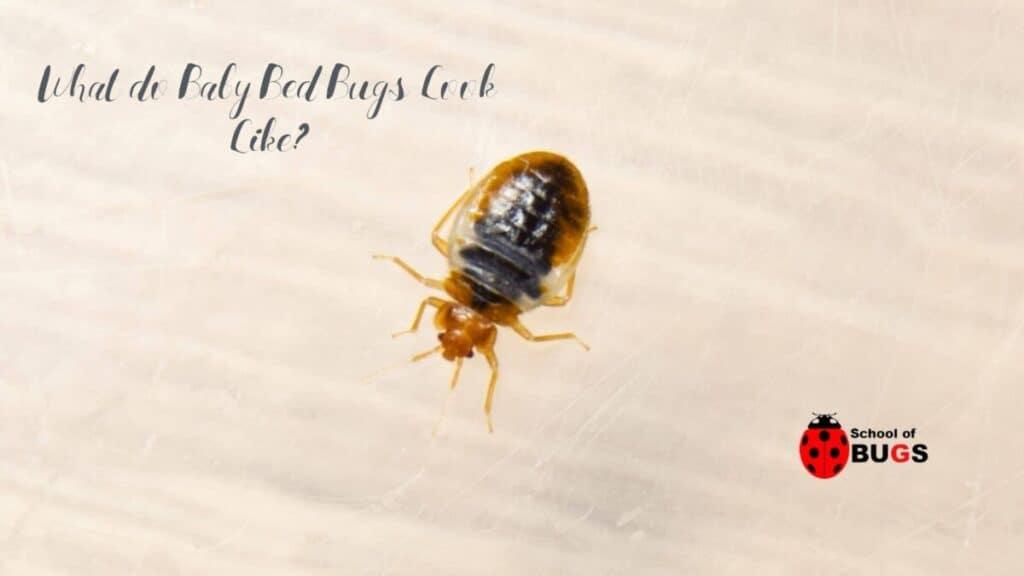
If you thought it was hard to see and identify bed bugs, wait until you get a look at baby bed bugs. Of course, if you can’t see the adults, you won’t be able to see the babies either.
Bed bugs go through five stages of development, starting at the egg stage and ending at the adult.
A baby bed bug is essentially a first-stage larva, roughly ¼ of the size of an adult, and a much lighter, almost reddish, brown coloration.
That’s when they’ve fed and a baby bed bug has to feed before it gains color. Unfed baby bugs are almost completely clear.
- The life cycle of the common bed bug
- The parts of a first-stage bed bug
- How bed bugs feed
- How bed bugs reproduce
- How to know what a bed bug egg looks like
- How to tell if you have an infestation
- How to eliminate the bed bug life cycle
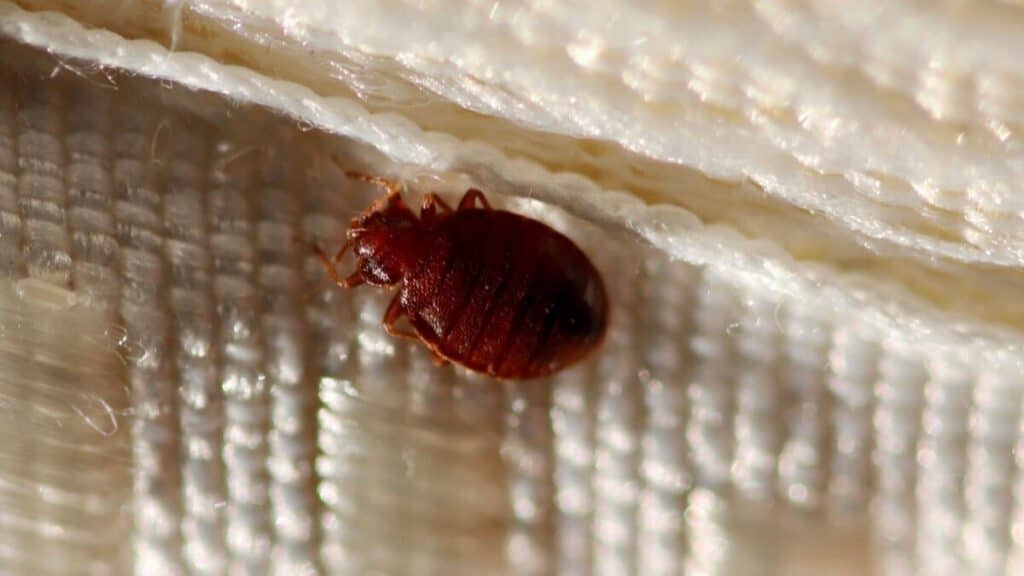
What is the Life Cycle of a Common Bed Bug?
Of course, everything starts with the female laying eggs. She will lay anywhere between 200 and 250 eggs in her lifetime and the average lifetime of a female bed bug is about one year.
If you have ten females in your room, that’s anywhere between 2,000 and 2,500 eggs in a single year.
That’s a pretty staggering number and it just goes to show how rapidly a few bed bugs can turn into a full-blown infestation.
Egg Stage
The bed bug egg is extremely tiny—about 1mm in length. They are usually white, so if you have white bed covers or light-colored bed covers, it will be very difficult to spot them.
If you have dark bedding, it’s easy to think that a bed bug egg is nothing more than a grain of sand or lint on the bed.
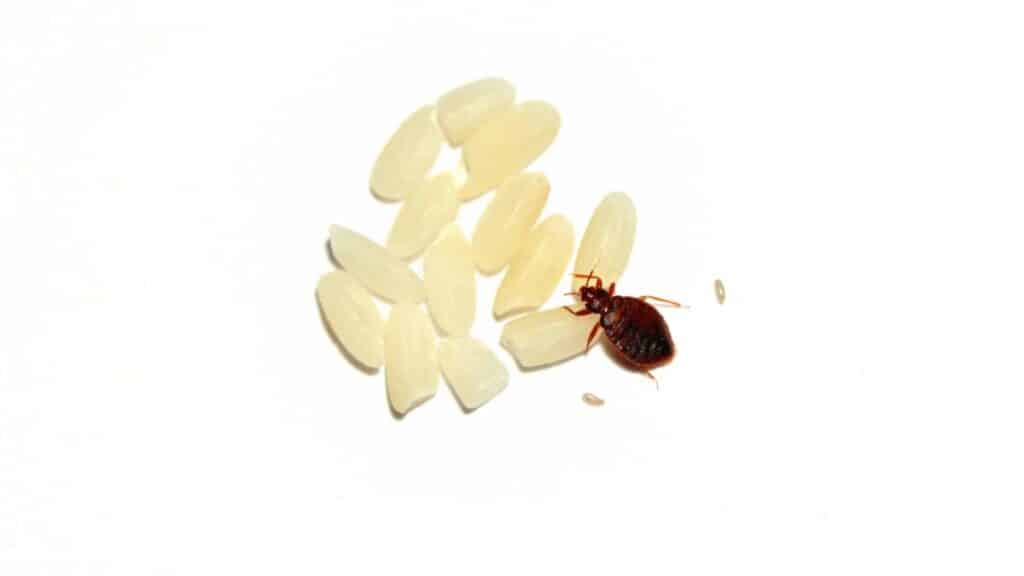
A female lays more than one at a time, however, so it will look like a tiny pile of sand. The eggs will remain as they are for a full two weeks—then the first-stage larva emerges.
Bed bugs don’t go through a “larva” stage insofar as people are familiar with. They emerge from the egg as they are and only grow from there.
First Stage
The bed bug is about 1.5mm in length and is mostly clear or transparent. They can live for nearly three months before they have to feed for the first time.
Bed bugs are highly resilient insects and even adults can go a very long time without feeding.
The first stage larva will not grow and take on color until it feeds. Once it has fed for the first time, it will advance to the second-stage larva.
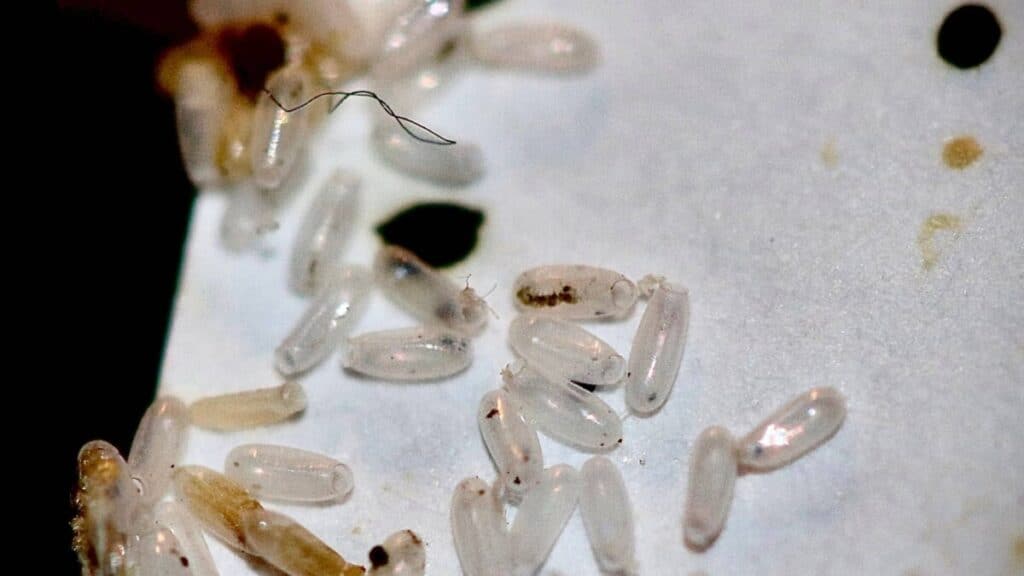
Second Stage
The second-stage larva is roughly double the size of the first stage. Like the first stage, it cannot advance in terms of growth until it had another meal. Once the second stage has its meal, it will molt, advancing to the third-stage larva.
Third Stage
A third-stage larva is about 2.5mm in length. It looks a little different than the second stage, after emerging from the molting process.
It’s a little lighter in color with a darker spot along its abdomen or on the tip of the abdomen. Like the previous stages, it has to have a blood meal, and then it will molt.
Fourth Stage
The fourth stage bed bug is about 3mm long and a little darker than it is when it’s in its third stage. Again, it needs another blood meal before it will molt.
Fifth Stage
In the final stage before adulthood, the fifth stage bed bug is about 4.5mm long, and, once again, it has to take another blood meal before it molts.
Adult
An adult bed bug emerges from the fifth-stage molt as a full-grown bed bug, measuring about 5.5mm. This is as large as it will get and it’s a brown color, with lighter brown patterns across a very large abdomen.
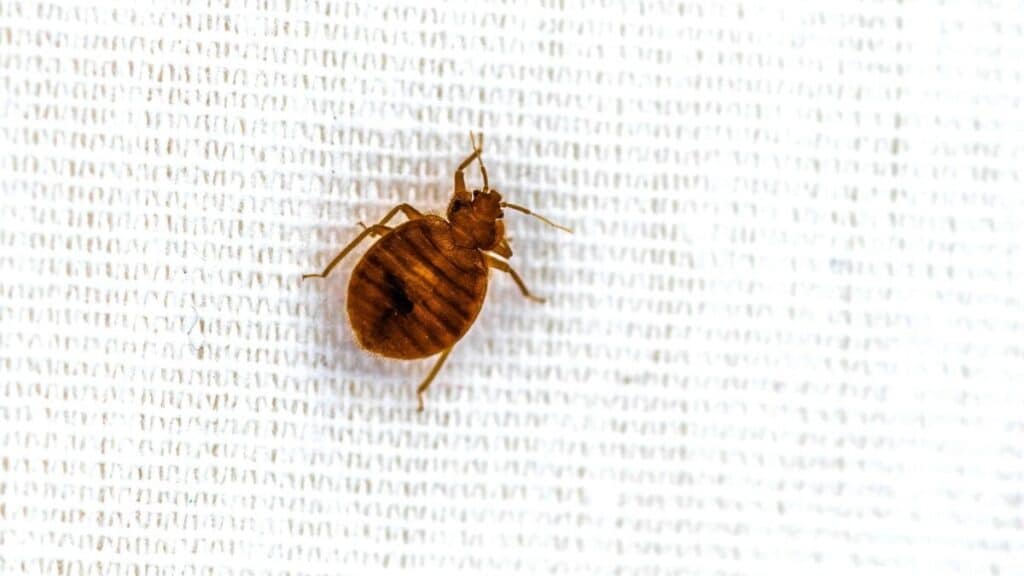
What are the Parts of a First Stage Bed Bug?
The first stage, or baby bed bug, has all of the parts you expect to find on a full-grown, adult bed bug. The only difference is that first-stage bed bugs are much smaller than their adult counterparts.
- Head
- Abdomen
- Wing Pad
- Pronotum
- Legs
- Antenna
Since a first-stage bed bug has to feed in order to molt and grow into the second stage, all of the feeding mechanisms and capabilities are there to get started. This includes the sucker that’s part of the bed bug’s mouth.
This sucker is their straw and after they gnash their way through your outer layers of skin, they will insert their little suckers and draw blood into the mouths.
As they drink, their bodies turn the red-brown color you expect to see when you look at a bed bug. Actually watching it happen is a little disconcerting.
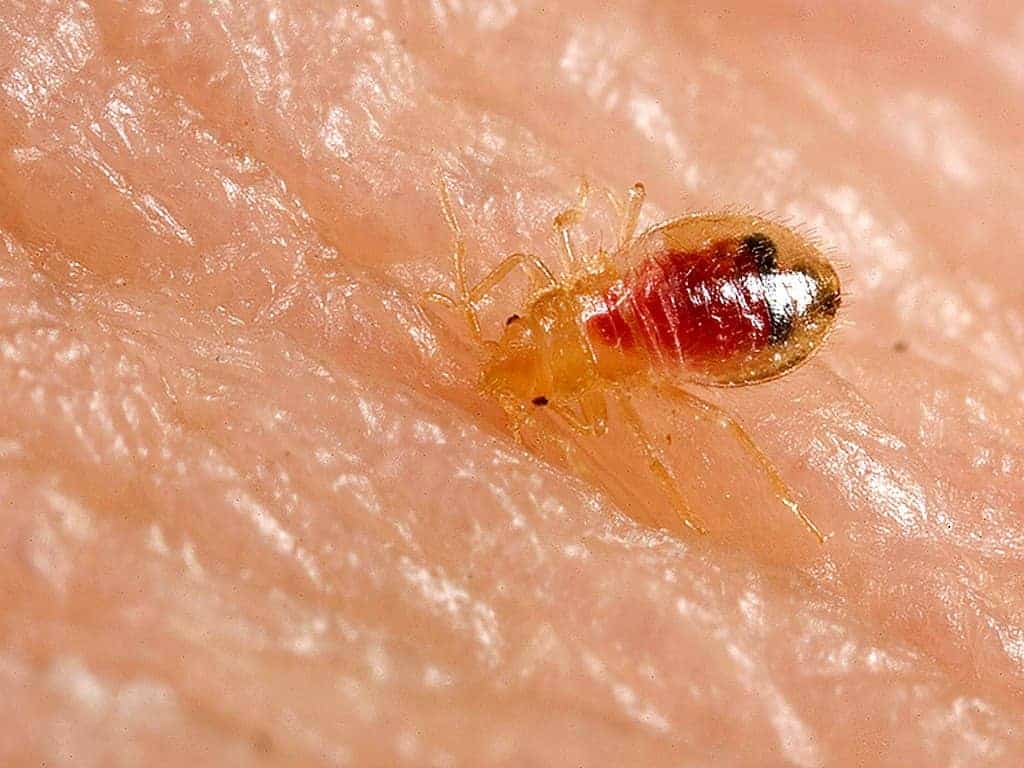
Traumatic insemination is the method through which male and female bed bugs mate. Sounds pretty awful, doesn’t it?
The male essentially stabs the female with a hard, needle-sharp reproductive organ and inseminates her. It doesn’t kill her by any means but it’s a definite stab that punctures the layers of her exoskeleton.
Within about 6 weeks, the female will develop a batch of viable eggs. She then goes on a wild, rampaging feeding spree, gorging herself on as much blood as she can possibly take in, all for the purpose of utilizing the metabolized energy to lay her eggs.
Once a female is fertilized, she’s essentially fertilized for life and will continue to produce and lay eggs until the day she dies. Ultimately, a female bed bug will lay anywhere between 2 and 10 eggs per week.
Some females, for whatever reason, are just powerhouse egg layers and will lay 12 eggs per week. Once the eggs hatch, the first stage larva bed bugs will seek food immediately, even though they can survive for up to three months without.
When it comes to female nymphs, they have to reach the adult stage before they can undergo successful, traumatic insemination with a male bed bug.
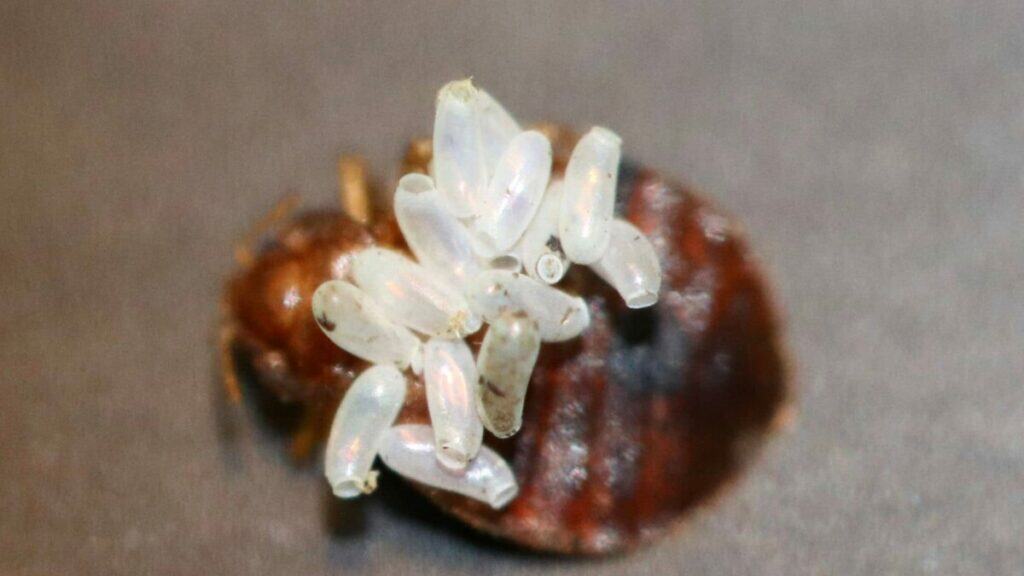
How to Know What a Bed Bug Looks Like
People who have never seen a bed bug before can easily confuse them with fleas. So long as they are fed and your bed covers are dark, you may never see them at all. Bed bugs, even as fully grown adults, are very small, only reaching about 5.5mm in length.
If you were to take a magnifying glass and hold it over an area that is infested with bed bugs, you would see that they have very small heads.
Three legs stick out on each side, for a total of six legs. Their abdomens are roughly oval but close to circular and much larger than their heads.
They are generally dirty brown in appearance unless they are still in the nymph (first and second stages). They look plated, since there are horizontal lines running across their abdomens, with an equal amount of spacing between each line.
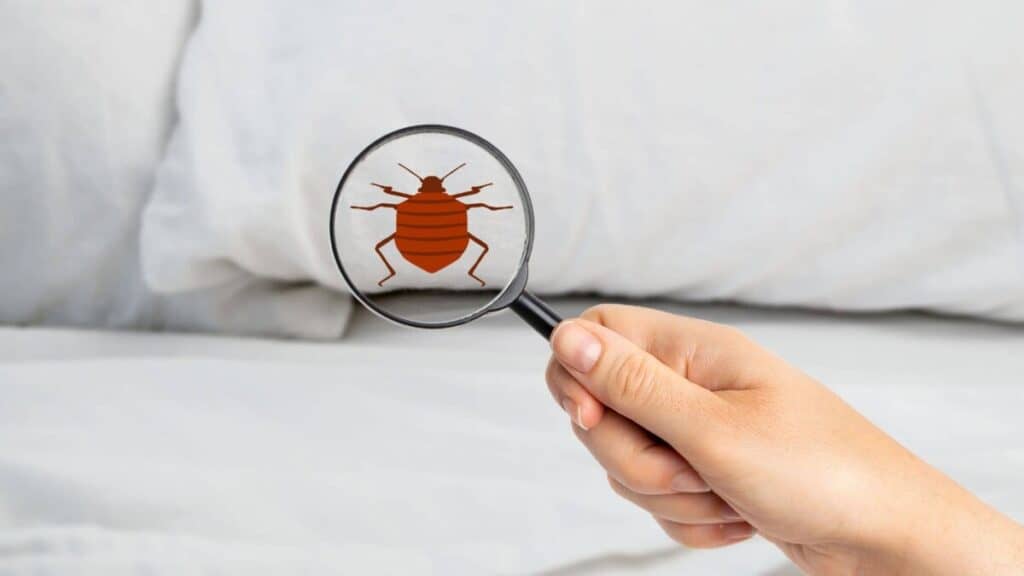
Bed bugs don’t have huge or overly long antennas and they are easily confused with smaller forelegs rather than actual antennas.
After feeding, they may look a bit larger for a short period of time before they settle back into themselves.
How to Tell if You Have an Infestation
There are a couple of ways you will be able to tell that you have a bed bug infestation going on. The first is the most obvious—you’ll have itchy bites all over your body or over a section of your body like a leg or an arm.
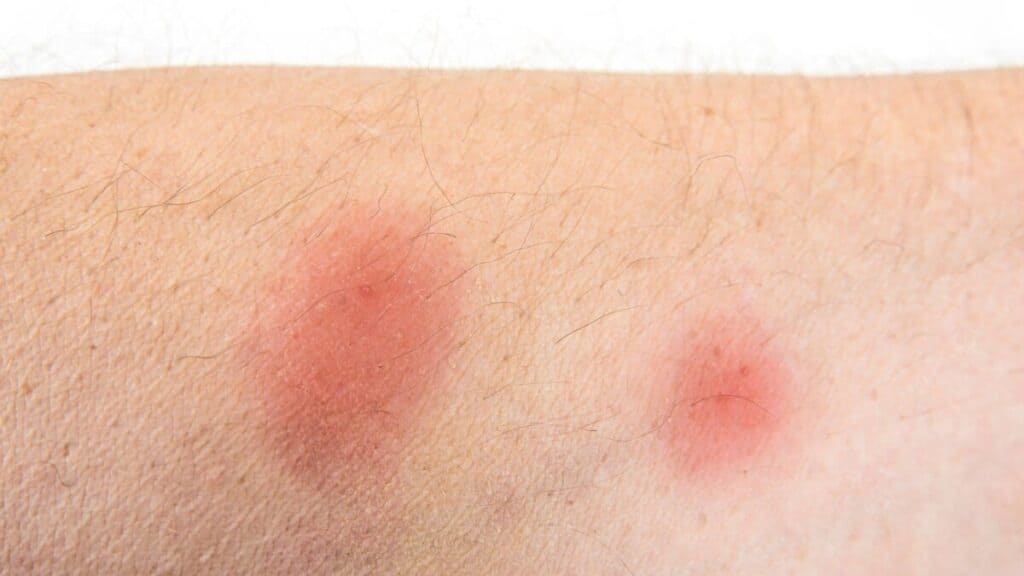
These bites are generally red, very itchy, and raised up in tiny lumps, not unlike an ant bite but a little redder, rather than turning into a white head at the source. The second way you can tell you have a bed bug infestation is the state of your sheets.
If you have very dark sheets, you probably won’t be able to see them. However, if you have light-colored sheets, you will notice there are tiny spots of blood here and there. Bed bugs don’t exactly feed like mosquitoes or fleas.
When they climb up on your skin, they use their mouths like a garbage disposal, churning their way through the skin by tearing it apart.
That’s why blood can escape, even though the damage is so tiny that you probably can’t see the actual ingress point.
Then, the bed bug will insert its sucker into the mangled flesh and start drawing out blood. It really sounds horrendous and, if you could see it under a microscope, it would certainly look like an uber-violent horror show designed for shocks more than scares.
The true horror is when you consider how many times this process happened while you were sleeping. If you wake up with 20 to 50 bites on you, the bed bugs were creating quite a microscopic mess with your skin while you were counting sheep.
How to Destroy the Bed Bug Life Cycle
Now that you want revenge and you understand the number of baby bed bugs that are being hatched each and every day, you probably want to know how to destroy this life cycle for good. There are several reasons these tiny little bugs are incredible survivors.
- Adults can live up to a year without feeding
- New eggs are being produced every week with each female
- One bedbug can produce hundreds of eggs per year
- They only feed at night
- You aren’t likely to know they are feeding
- They can survive in the cracks and crevices of your bed frame
Because of this high level of survivability, the only way you can interrupt the life cycle is to destroy every single one of them.

That means cleaning out the room they are infesting, removing all blankets, covers, sheets, pillowcases, rugs, curtains, and bed skirts.
You can either kill them with extreme heat or suffocation. Suffocation works best when you seal the mattress and pillows in plastic and vacuum suck the air out of the seals. Steam clean their dead carcasses out afterward.
Everything else in the room has to be chemically cleaned or chemically treated. Natural remedies won’t kill them.
All Things Considered
Baby bed bugs look much like their adult counterparts, just much smaller and a lighter shade of red immediately after feeding for the first time. Before their first blood meal, they are generally clear in appearance.
The last thing you want to see is baby bed bugs because that means the adults are running around somewhere and the female is very busy.
Once you discover an infestation or a burgeoning one, it’s time to act before those babies become adults and make thousands more babies.
Alright, that’s it for this article, here are a few hand-selected articles that you might also find interesting reads:
Cockroaches That Look Like Bed Bugs – 3 Common ExamplesTiny brown bugs in bed – Everything you need to know!
9 Things You Should Know About Bed Bugs
Recent Posts
Tiny Black Bugs in Bathroom NO WINGS: What They Are and What to Do!
Finding tiny black bugs in your bathroom can be uncomfortable, to say the least. Especially if they are persistent, or they appear in very large numbers, which they often like to do. When it...
Tiny Black Bugs in Plant Soil - What Are They & What To Do About It
A short horror story: You get a new houseplant. You do your best to take care of it. You’ve ensured that it has the right soil, the right amount of sun, it gets enough water. And then one day, you...

